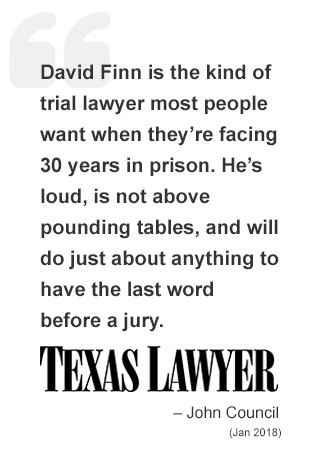


Federal Sentencing – Race & Socio-Economic Factors
Winnie Hu and Griff Palmer, To Close Gaps, Schools Focus on Black Boys, New York
Times, April 9, 2007.
Available at: http://select.nytimes.com/gst/abstract.html?res=
F30E17FE3E5B0C7A8CDDAD0894DF404482
“Ossining, NY, school district programs aimed to get black male students to
college is new frontier in nationwide effort to close achievement gap between
minority and white students…”
“…second- and third-grade black boys are set apart by special mentoring
program that pairs them with black teachers for one-on-one guidance outside
class, extra homework help, and cultural activities during school day…”
“Ossining’s special programs for black male students began in 2005 and now
stretch from kindergarten all the way to college-preparatory program for high
schoolers…”
Arianna Huffington, The War on Drugs’ War on Minorities, L.A. Times, March 24, 2007.
Available at: http://www.latimes.com/news/opinion/commentary/la-oehuffington
24mar24,1,4064763.story?ctrack=1&cset=true
“According to a 2006 report by the American Civil Liberties Union, African
Americans make up an estimated 15% of drug users, but they account for
37% of those arrested on drug charges, 59% of those convicted and 74% of
all drug offenders sentenced to prison. Or consider this: The U.S. has
260,000 people in state prisons on nonviolent drug charges; 183,200 (more
than 70%) of them are black or Latino.”
“Avoidance of this issue [excessive punishment for non-violent drug offenses]
comes at a very stiff price (and not just the more than $50 billion a year we’re
spending on the failed drug war). The toll is paid in shattered families,
devastated inner cities and wasted lives (with no apologies for using that
term).”
“Federal sentencing guidelines dictate that judges impose the same five-year
prison sentence for possession of five grams of crack or 500 grams of
powder cocaine.”
“…Jeff Sessions (R-Ala.), is now leading the charge in Congress to ease
crack sentences. ‘I believe that as a matter of law enforcement and good
public policy, crack cocaine sentences are too heavy and can’t be justified,’
he said. ‘People don’t want us to be soft on crime, but I think we ought to
make the law more rational.’”
Brennan Center for Justice at NYU School of Law and The National Institute for Law and
Equity, Prosecutorial Decision-Making and Racial/Ethnic Disparities in the Federal Criminal
Justice System: Principles and Guidelines, 19 Fed. Sent. Rep. 192 (app.) (Feb. 2007).
Available at: http://www.brennancenter.org/dynamic/subpages/
download_file_48382.pdf
“If adopted, the guidelines will reduce unwarranted racial disparities in the
criminal justice system and provide prosecutors with practical tools to use in
their work.”
“The new procedures call on prosecutors to:
- Be conscious of racial disparities when setting prosecution priorities;
- Be proactive with law enforcement agencies to prevent bias and make
sure similar defendants receive similar charges; - Implement race bias training for staff and law enforcement agencies;
- Seek input from and effectively communicate with community-based
organizations.”*Summary by Lynn Lu, Katz Fellow & Counsel, Brennan Center for Justice
at NYU School of Law
Erik Eckholm, Plight Deepens for Black Men, Studies Warn, N.Y. Times, March 20, 2006,
at A1.
“Especially in the country’s inner cities, finishing high school is the exception,
legal work is scarcer than ever and prison is almost routine, with
incarceration rates climbing for blacks even as urban crime rates have
declined.”
“If you look at the numbers, the 1990s was a bad decade for young black
men, even though it had the best labor market in 30 years.”
“In 2000, 65 percent of black male high school dropouts in their twenties
were jobless – that is, unable to find work, not seeking it, or incarcerated.
By 2004, that share had grown to 72 percent, compared with 34 percent of
white and 19 percent of Hispanic dropouts. Even when high school
graduates were included, half of black men in their twenties were jobless in
2004, up from 46 percent in 2000.”
The Sentencing Project, The Federal Prison Population: A Statistical Analysis.
Available at: http://www.sentencingproject.org/pdfs/federalprison.pdf
“African Americans now serve virtually as much time in prison for a drug
offense (57.2 months) as whites do for a violent offense (58.8 months).” Id.
at 2.
Jens Ludwig, Greg J. Duncan and Paul Hirschfield, Urban Poverty and Juvenile Crime:
Evidence From A Randomized Housing-Mobility Experiment, Quarterly Journal of
Economics, Vol. 116:2 (2001).
Analyzing federal and state government data on housing and juvenile crime
activity in the Greater Baltimore Metropolitan Area to discover the effects of
neighborhood poverty levels on criminal behavior.
“Our central finding is that [a relocation] from a high- to a lower-poverty
neighborhood reduces involvement in violent crime.”
“[M]oves to very low-poverty areas may cause an increase in property crime
offending, at least in the short term.”
Glenn C. Loury, Why Are So Many Americans in Prison: Race and the Transformation of
Criminal Justice, The Boston Review, July/Aug. 2007, at 7.
Discussing the transformation of highly politicized issues of race in the postcivil
rights era into “seemingly race-neutral concerns over crime,” with the
result being that punishment for crime has been transformed into a system
of racial hierarchy.
Pointing to study by Jeffrey Fagan and others that “discovered a perverse
effect of incarceration on crime: higher incarceration in a given neighborhood
in one year seemed to predict higher crime rates in that same neighborhood
one year later. . . . [D]iscretionary and spatially discriminatory police behavior
led to a high and increasing rate of repeat admissions in the designated
neighborhoods, even as crime rates fell.” This situation is explained by the
fact that the sellers most easily targeted by police, who have quotas to meet,
“come predominately from the poorest, most non-white parts of the city.” Id.
at 8-9.
“[C]onsider the nearly 60 percent of black male high-school dropouts born in
the late 1960s who are imprisoned before their 40th year. While locked up,
these felons are stigmatized – they are regarded as fit subjects for shaming.
Their links to family are disrupted; their opportunities for work are diminished;
their voting rights may be permanently revoked. They suffer civic
excommunication.” Id.at 9.
“Mass incarceration has now become the principle vehicle for the
reproduction of racial hierarchy in our society.” Id.at 10.
John Paul Wright et al, Association of Prenatal and Childhood Blood Lead
Concentrations with Criminal Arrests in Early Adulthood, PLoS Medicine, Vol. 5, No. 5,
e101 doi:10.1371/journal.pmed.0050101
Available at:
http://medicine.plosjournals.org/perlserv/?request=get-document&doi=10.1371/journal.p
med.0050101#toclink4
Physical Condition].
“Prenatal and childhood blood lead concentrations were predictors of adult arrests.
. . . Data from several recent prospective studies suggest that blood lead
concentrations in the later preschool years may be more predictive of cognitive and
behavioral problems.”
“One factor in the disproportional representation of African-Americans in
crime statistics could well be the historically higher exposures to lead in these
communities.”
“Childhood lead exposure therefore seems to place individuals at risk for
multiple underlying neurobehavioral deficits associated with a higher
probability of later criminal behavior.”
Phone Numbers
Office: (214) 538-6629







